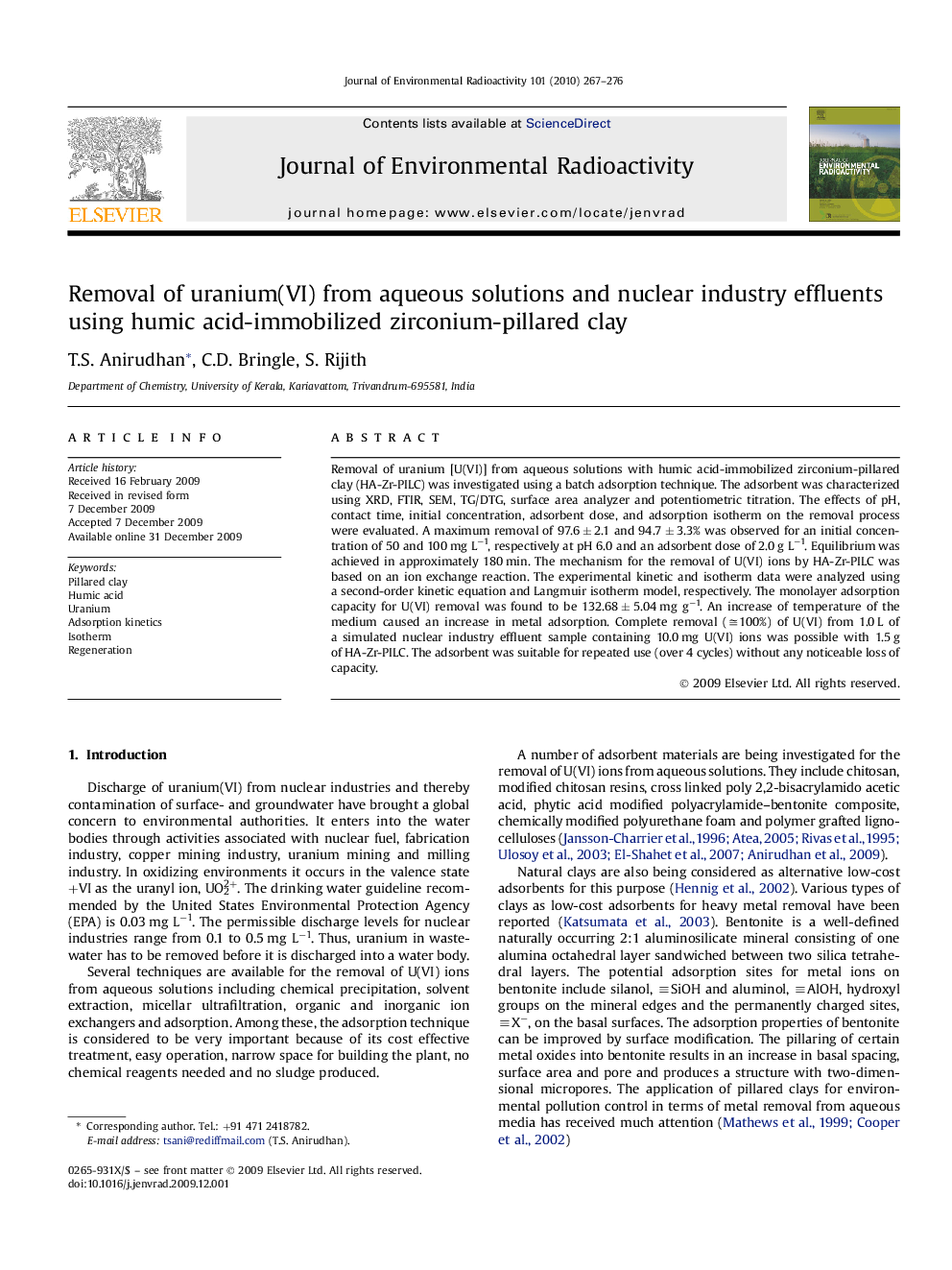| Article ID | Journal | Published Year | Pages | File Type |
|---|---|---|---|---|
| 1738536 | Journal of Environmental Radioactivity | 2010 | 10 Pages |
Removal of uranium [U(VI)] from aqueous solutions with humic acid-immobilized zirconium-pillared clay (HA-Zr-PILC) was investigated using a batch adsorption technique. The adsorbent was characterized using XRD, FTIR, SEM, TG/DTG, surface area analyzer and potentiometric titration. The effects of pH, contact time, initial concentration, adsorbent dose, and adsorption isotherm on the removal process were evaluated. A maximum removal of 97.6 ± 2.1 and 94.7 ± 3.3% was observed for an initial concentration of 50 and 100 mg L−1, respectively at pH 6.0 and an adsorbent dose of 2.0 g L−1. Equilibrium was achieved in approximately 180 min. The mechanism for the removal of U(VI) ions by HA-Zr-PILC was based on an ion exchange reaction. The experimental kinetic and isotherm data were analyzed using a second-order kinetic equation and Langmuir isotherm model, respectively. The monolayer adsorption capacity for U(VI) removal was found to be 132.68 ± 5.04 mg g−1. An increase of temperature of the medium caused an increase in metal adsorption. Complete removal (≅100%) of U(VI) from 1.0 L of a simulated nuclear industry effluent sample containing 10.0 mg U(VI) ions was possible with 1.5 g of HA-Zr-PILC. The adsorbent was suitable for repeated use (over 4 cycles) without any noticeable loss of capacity.
